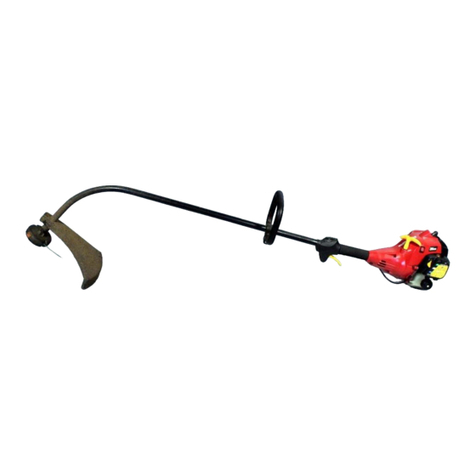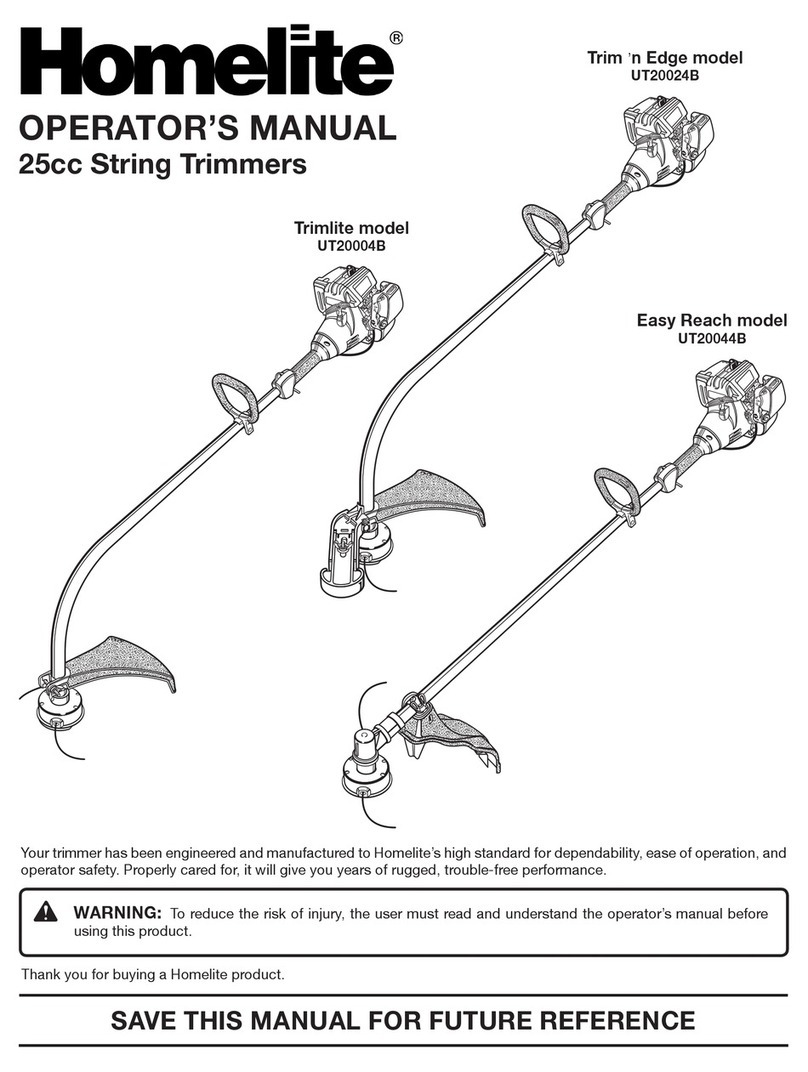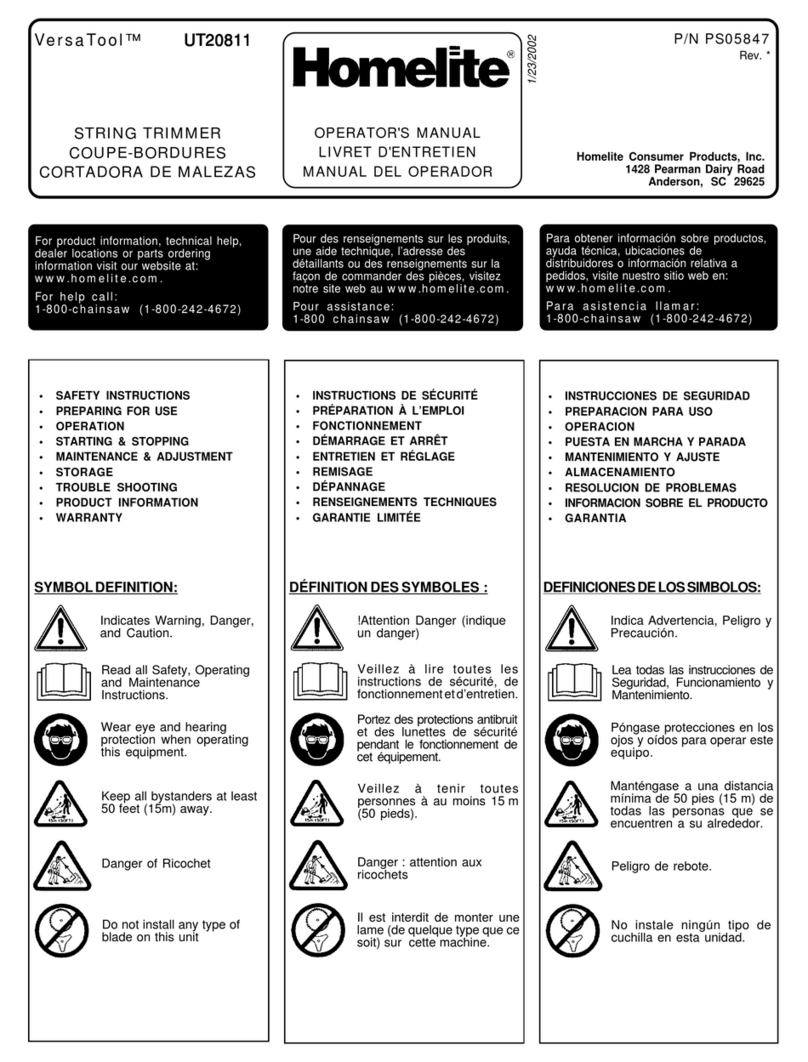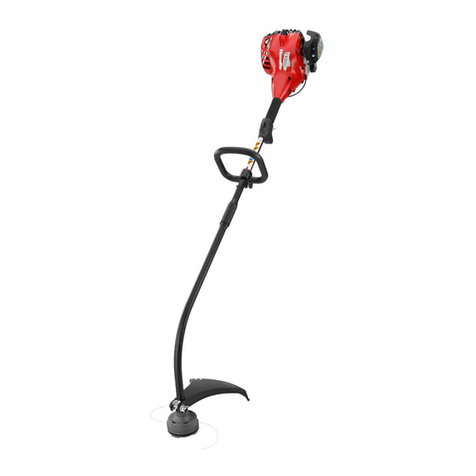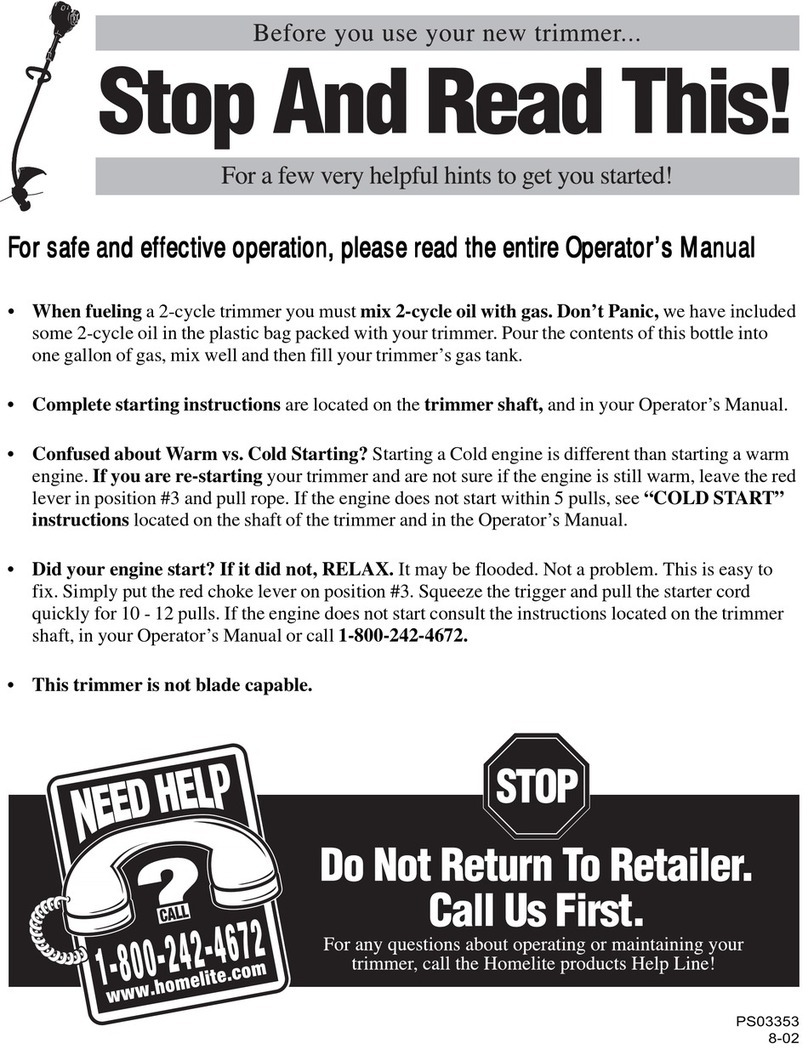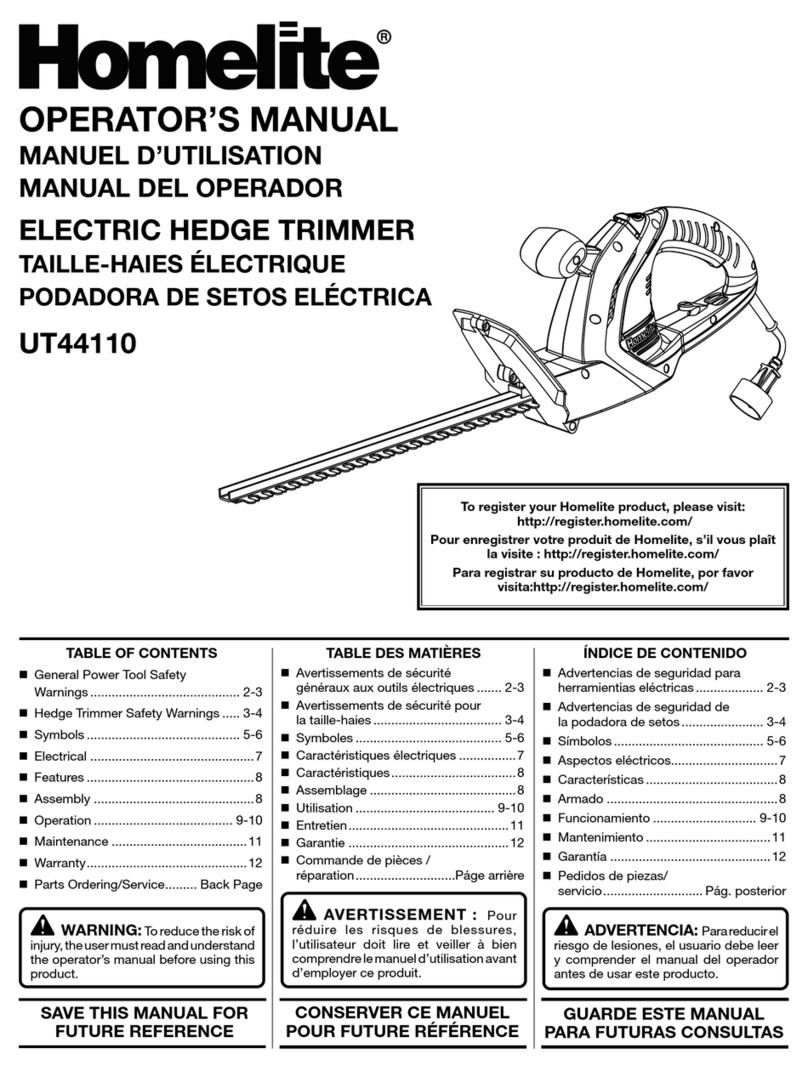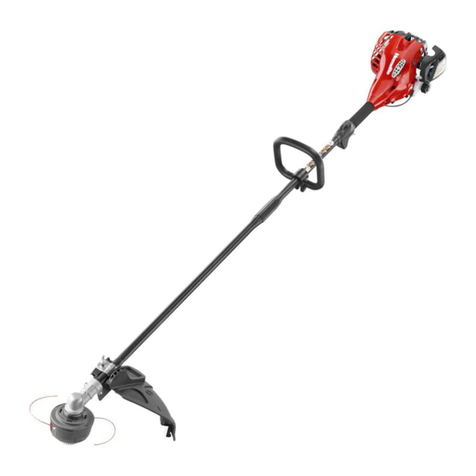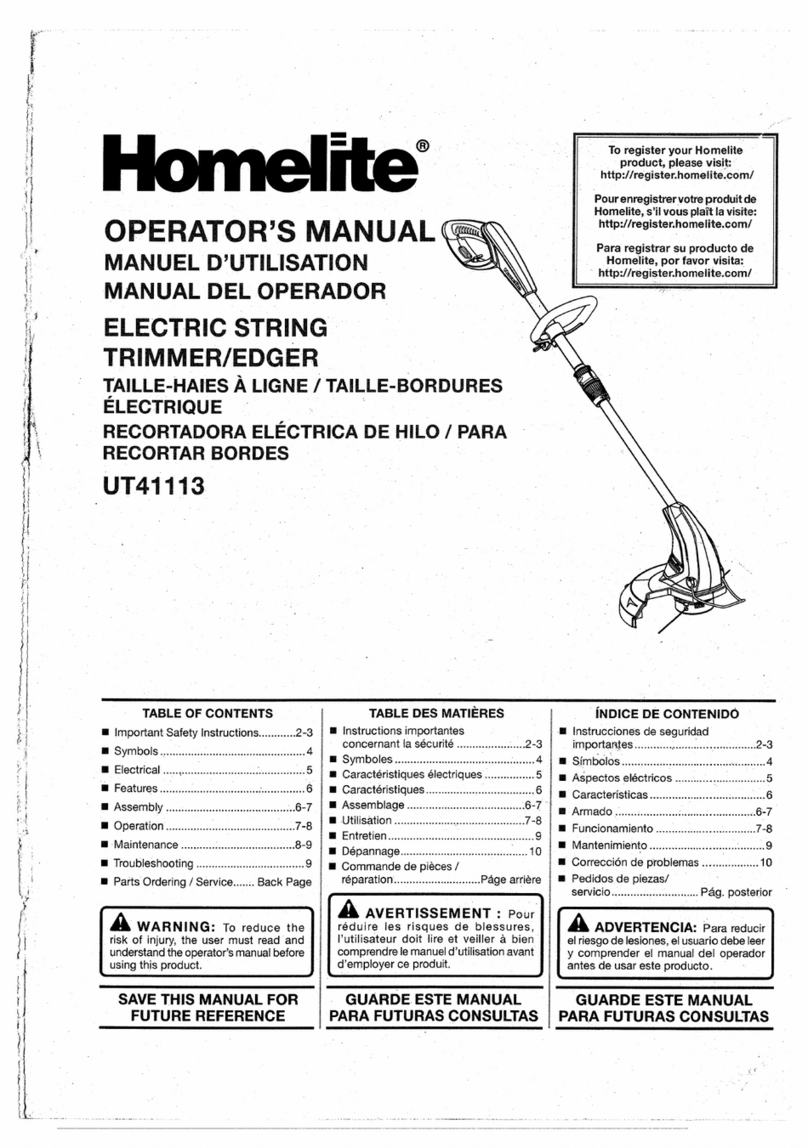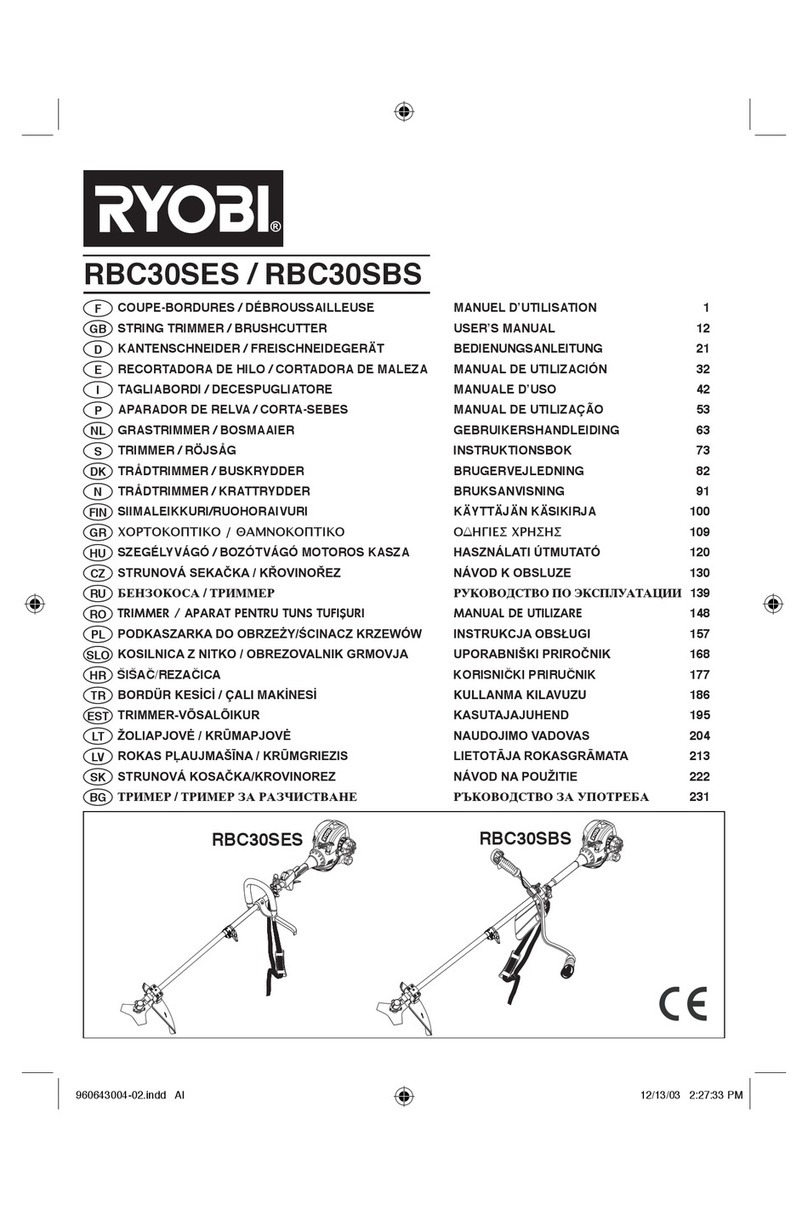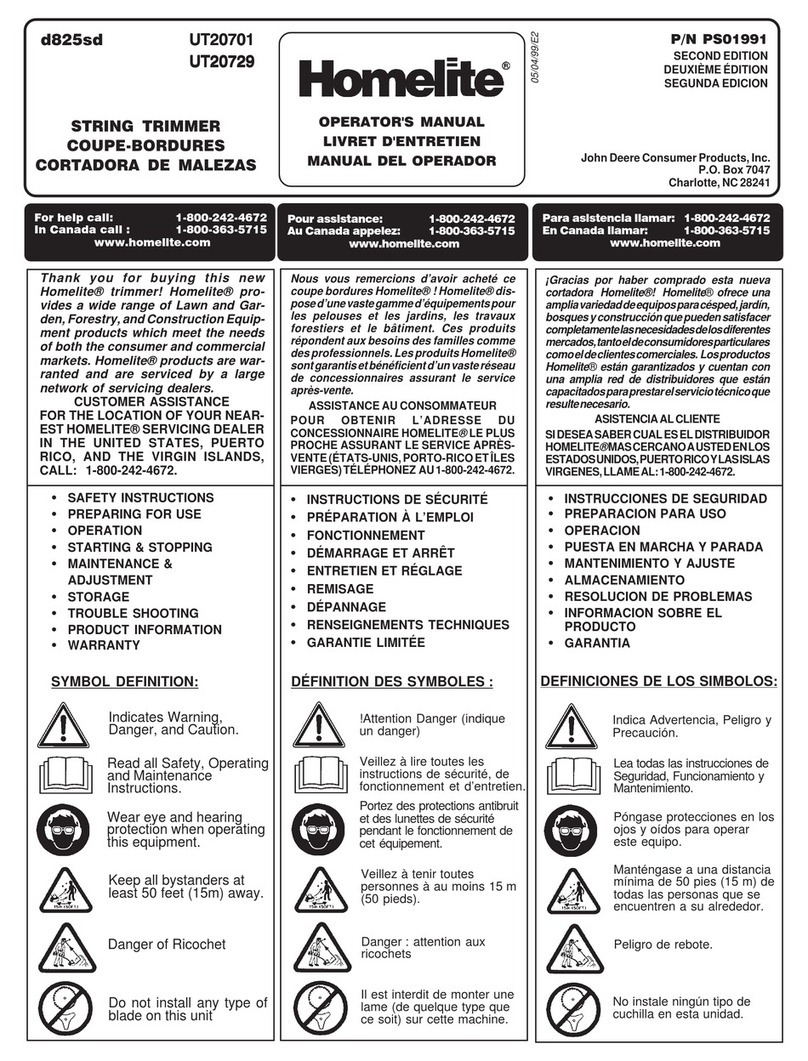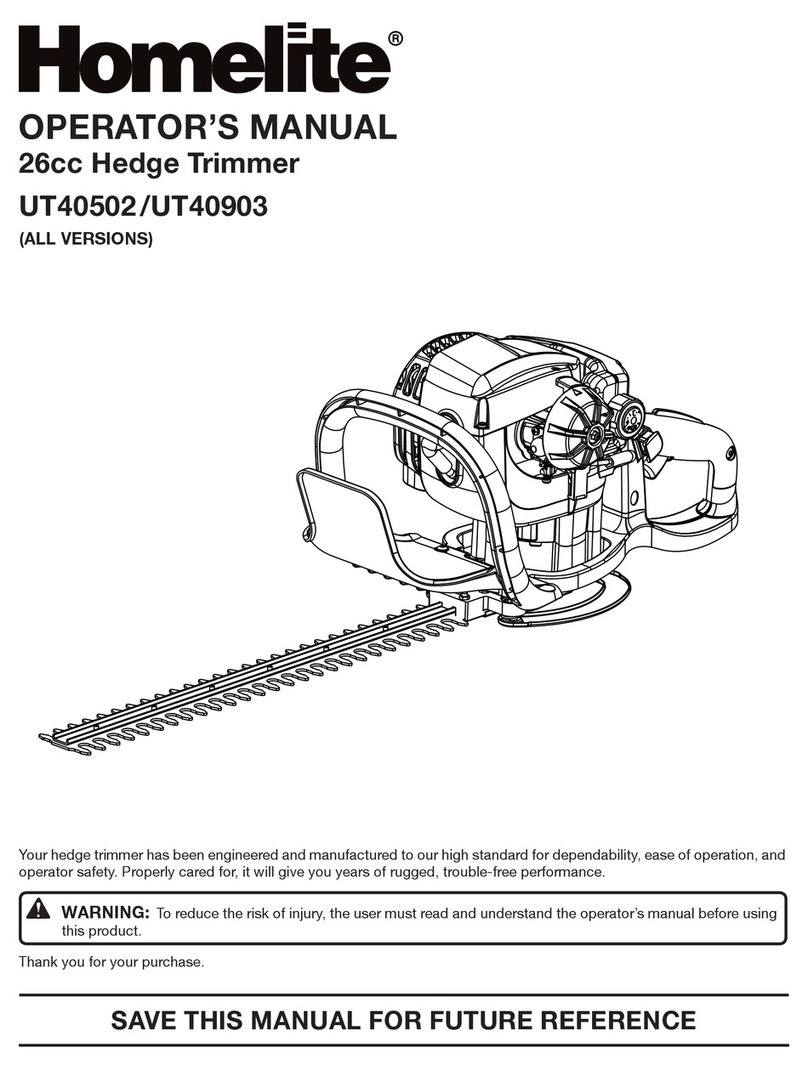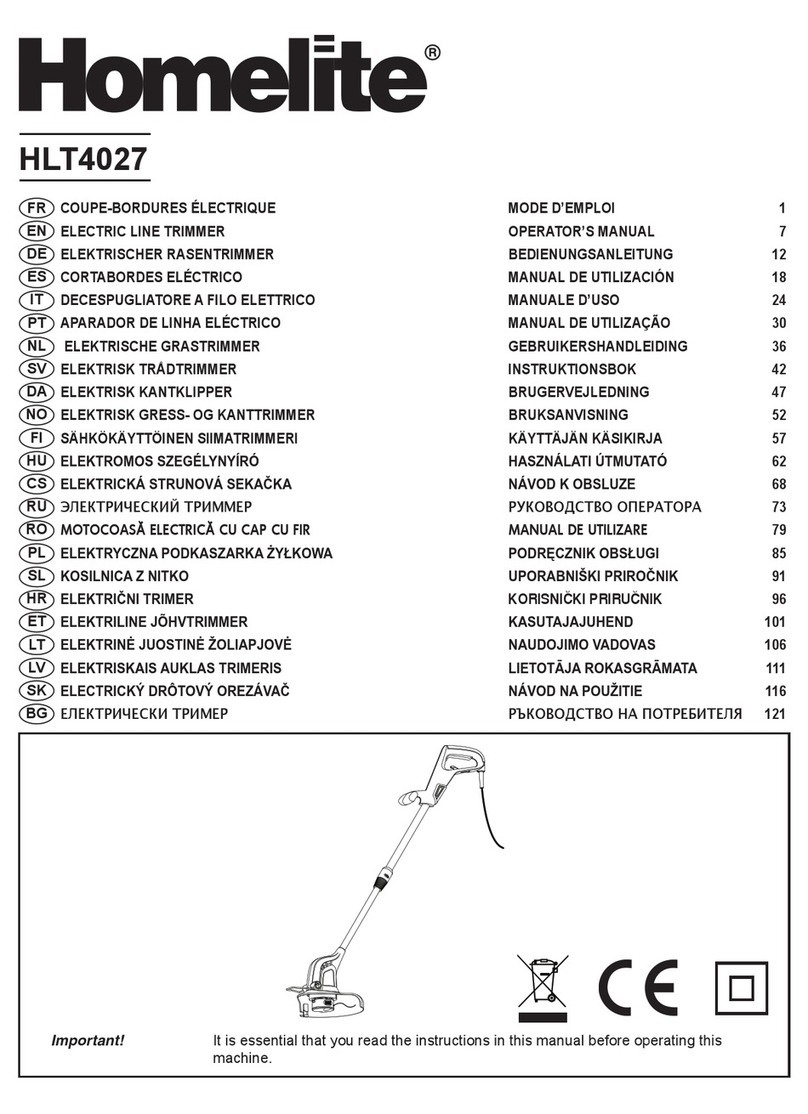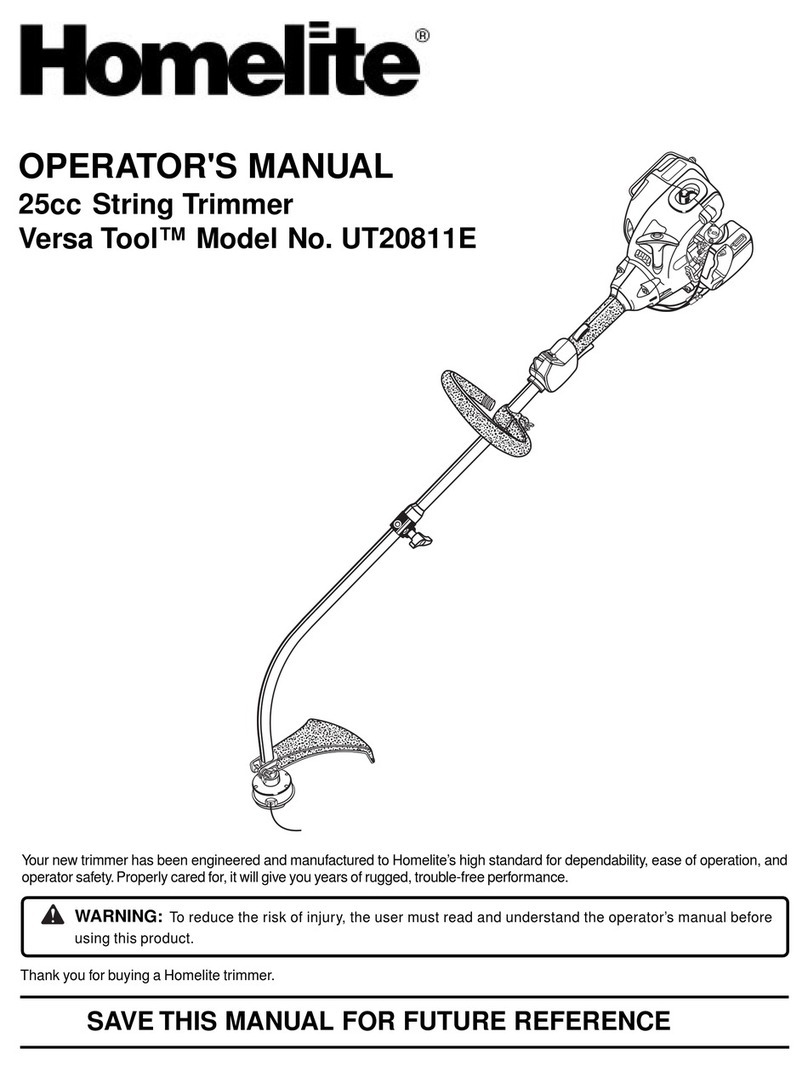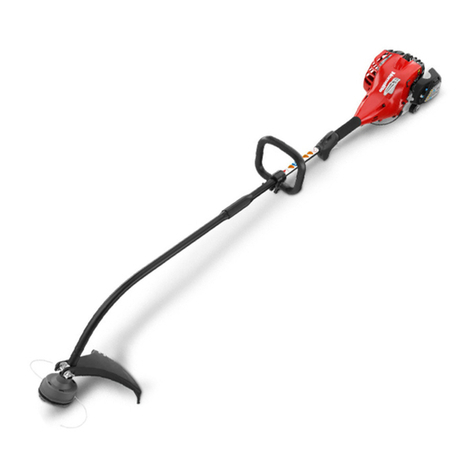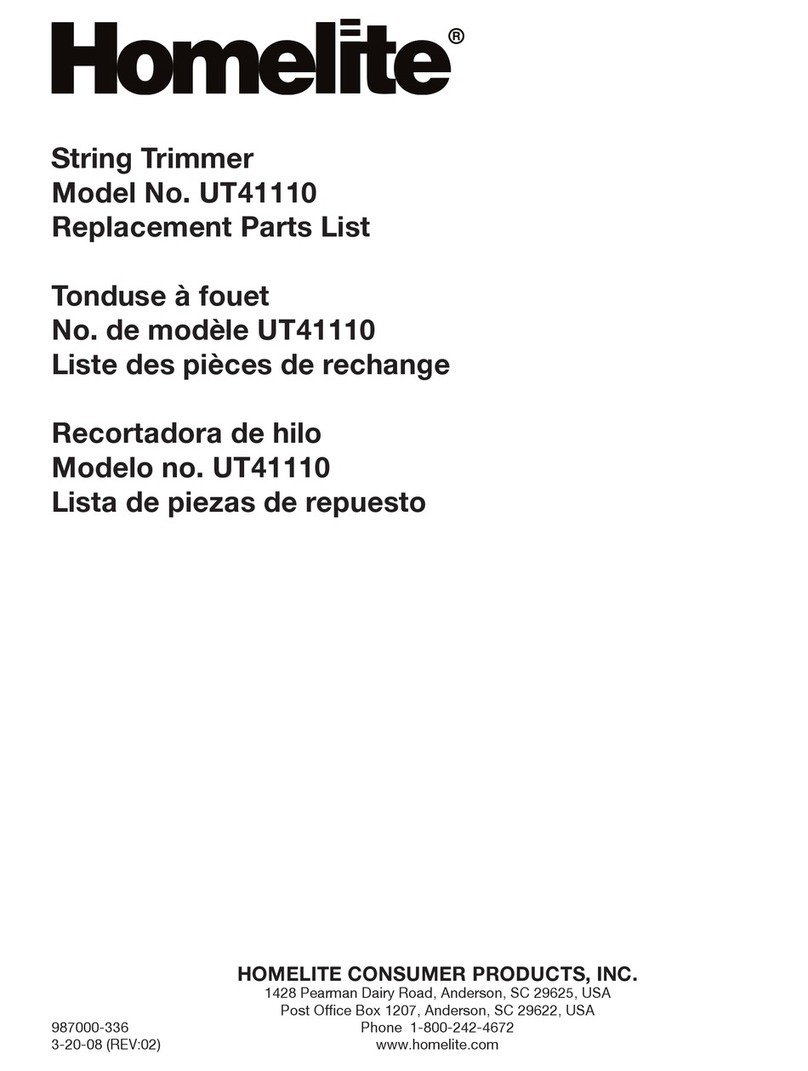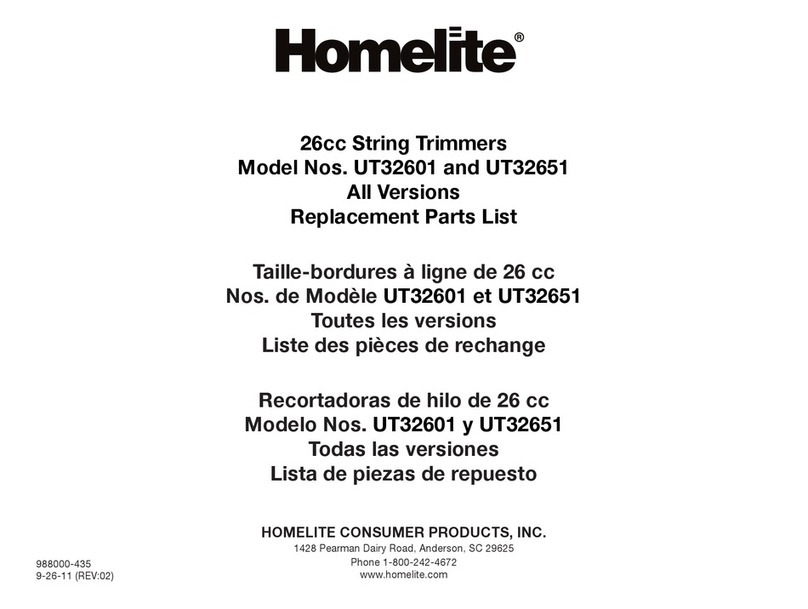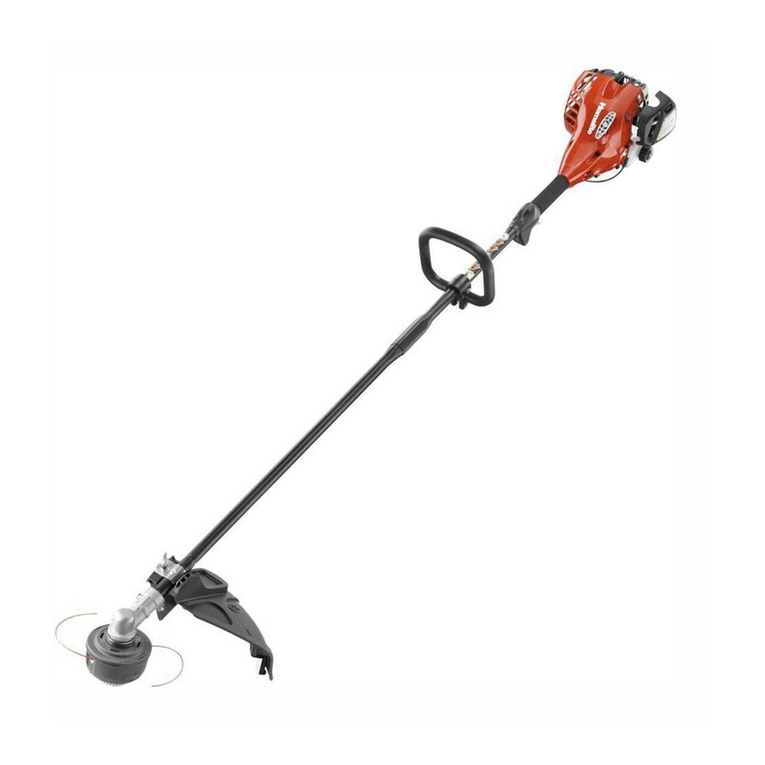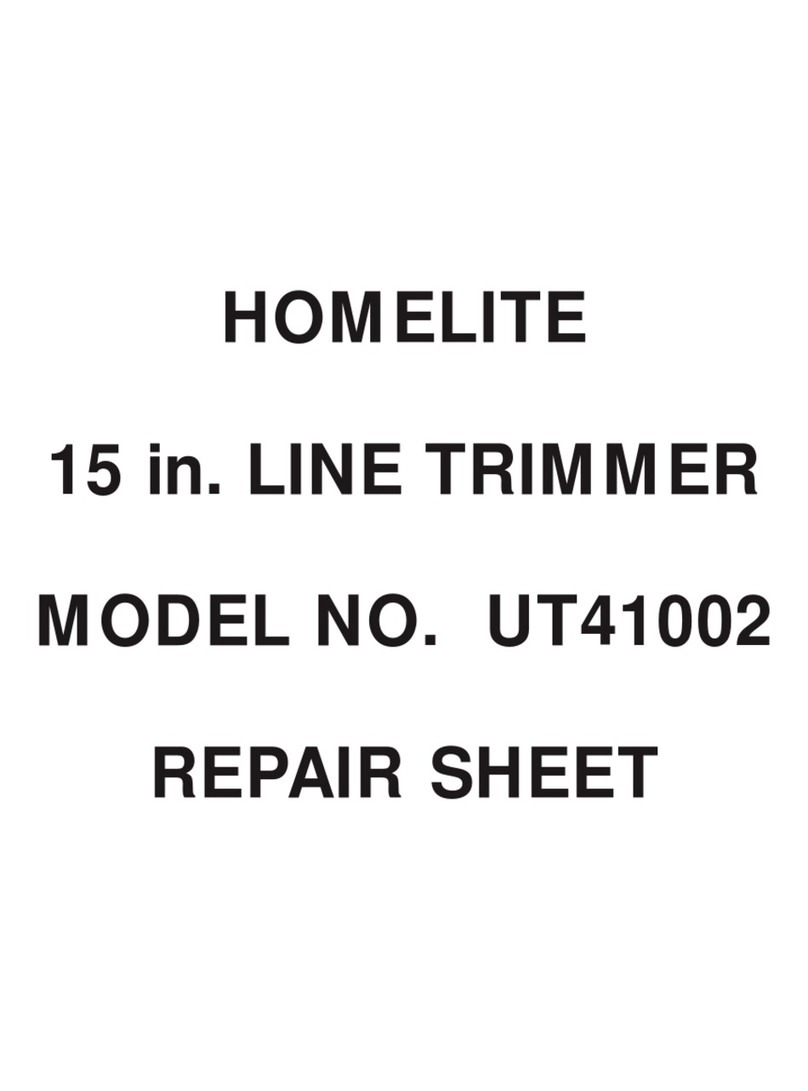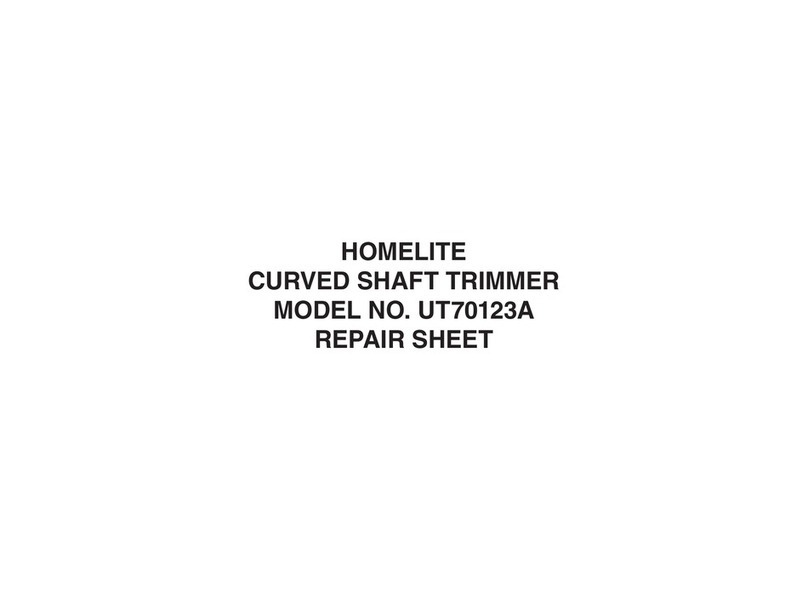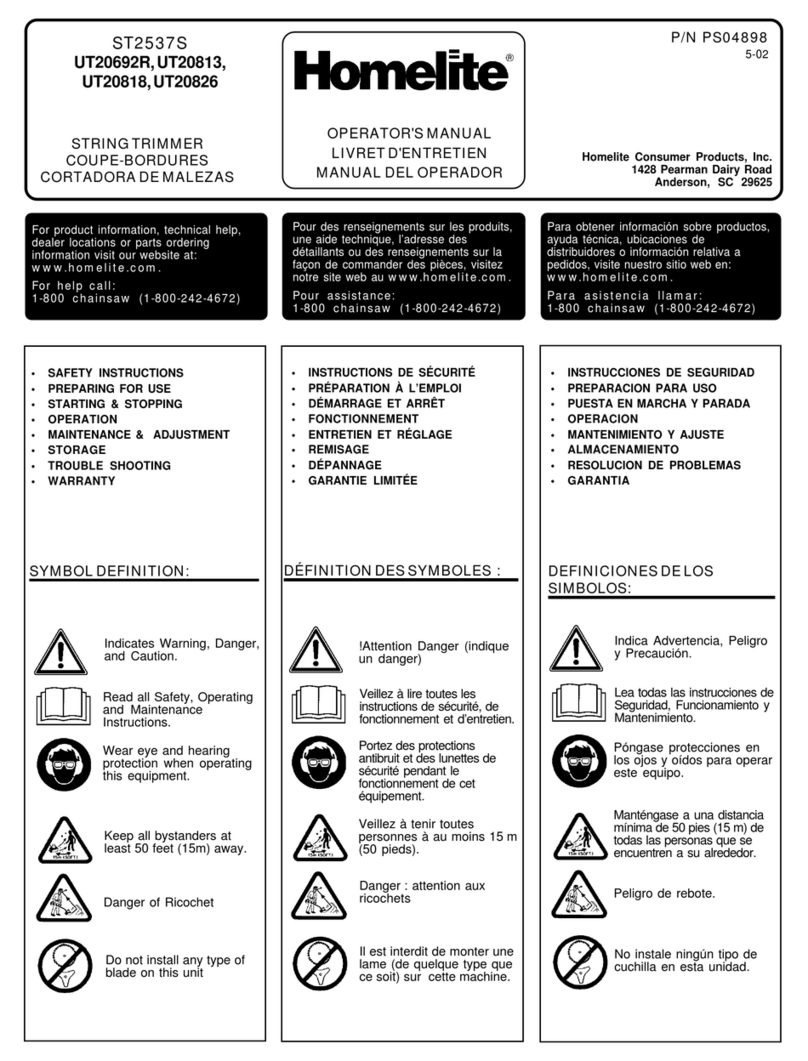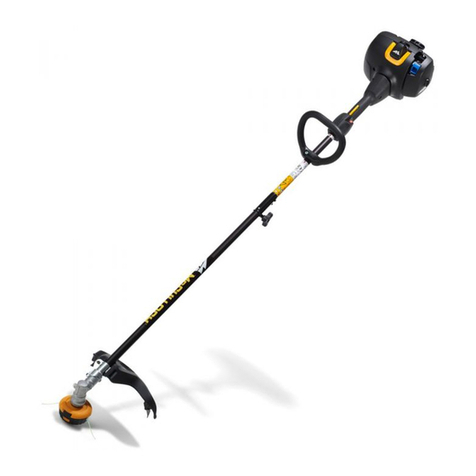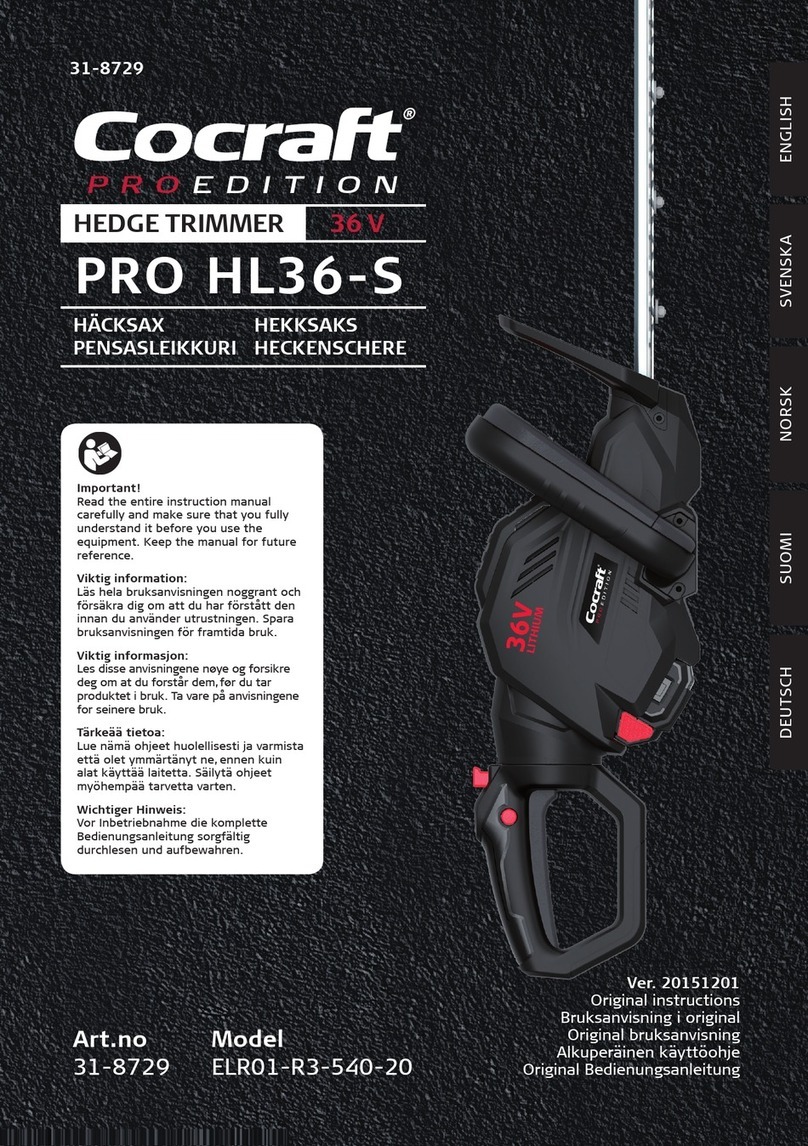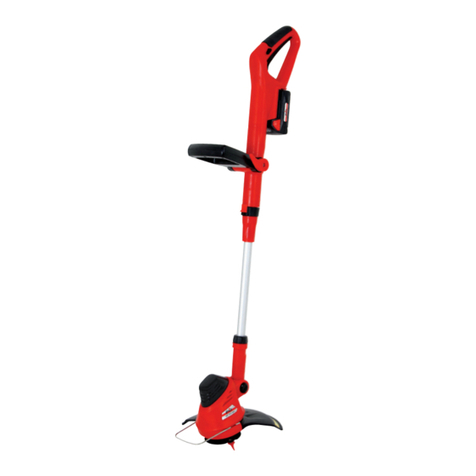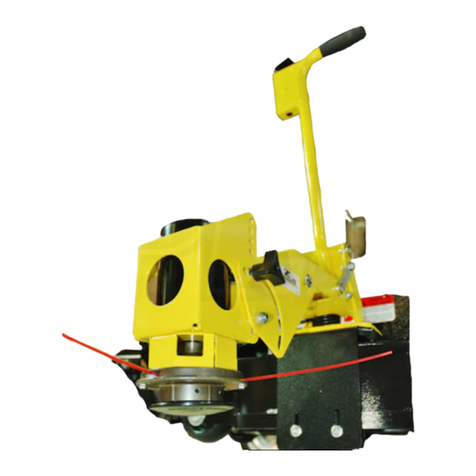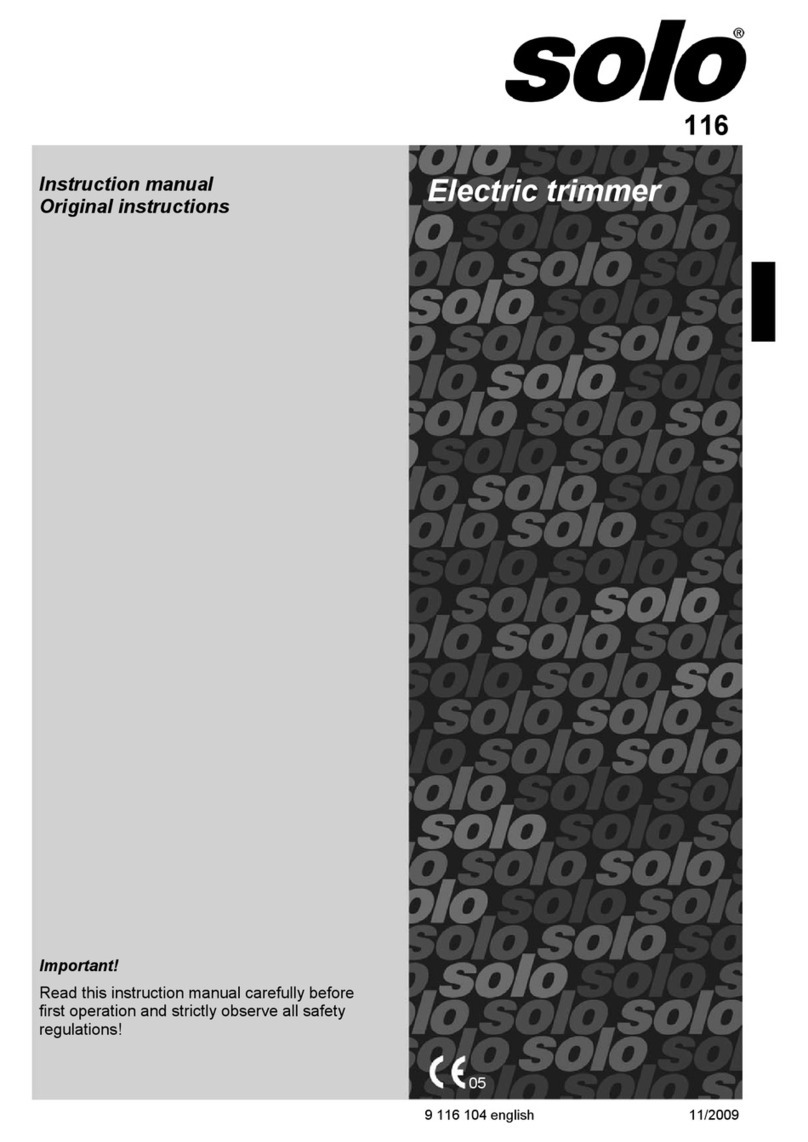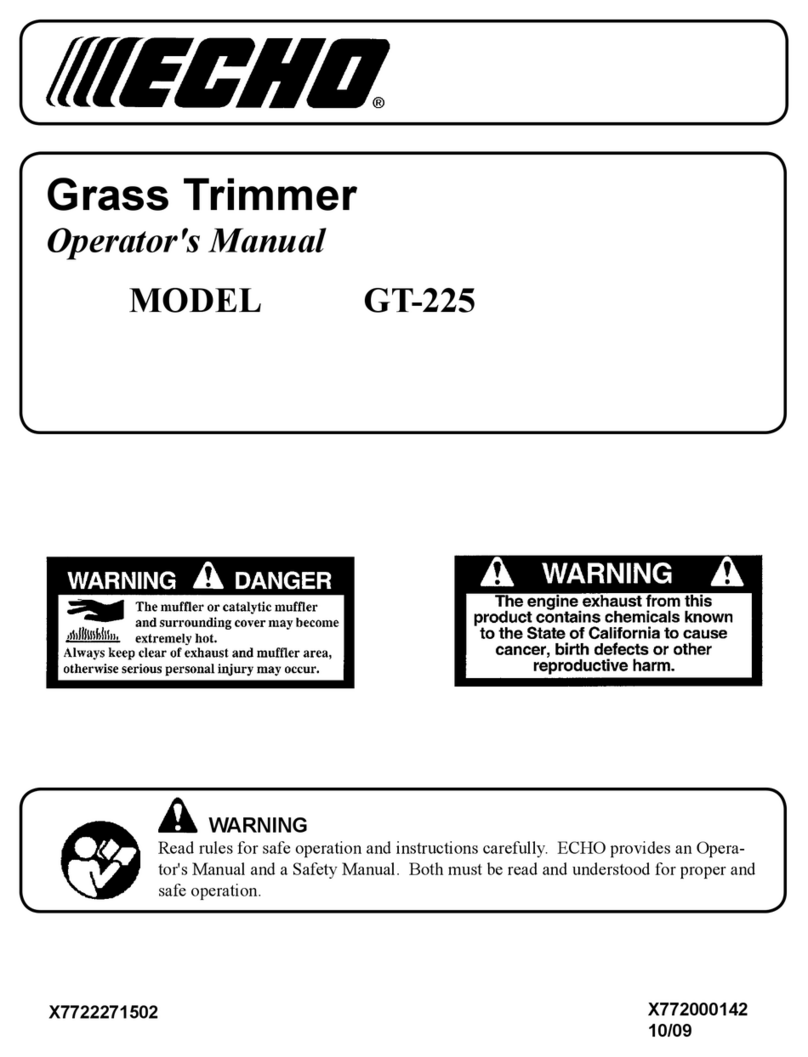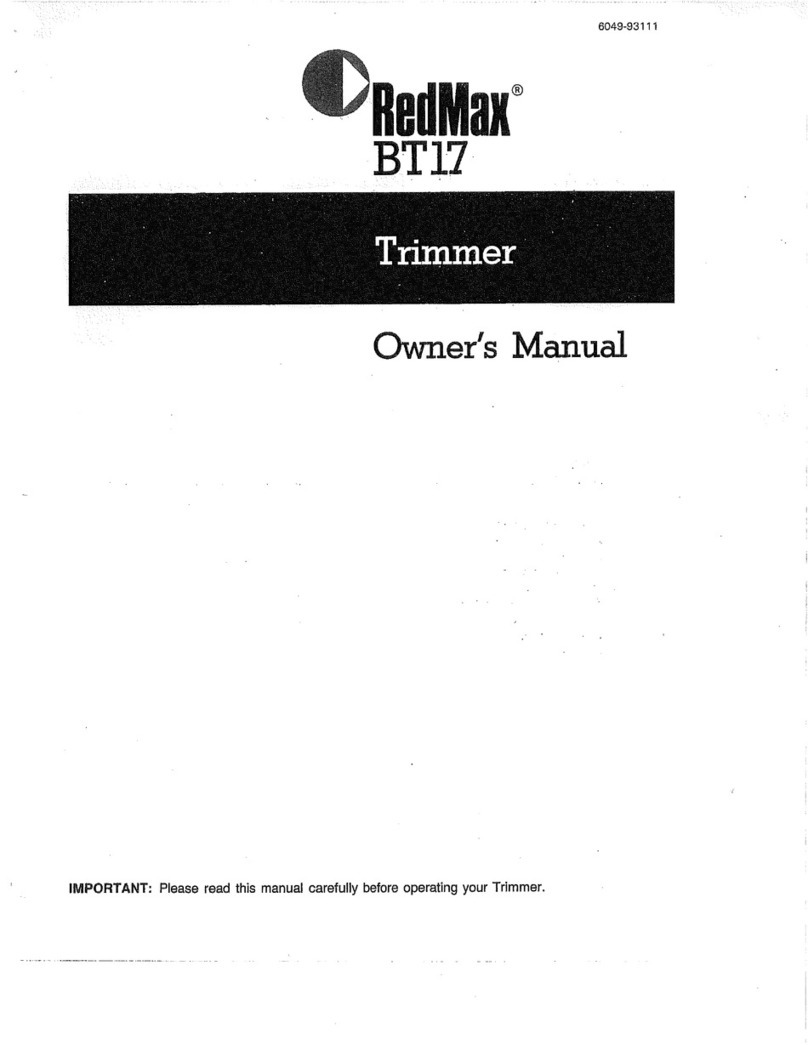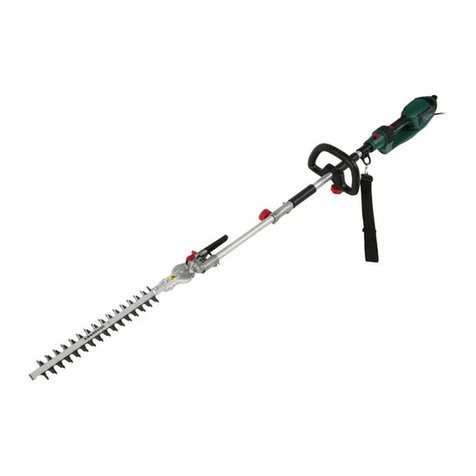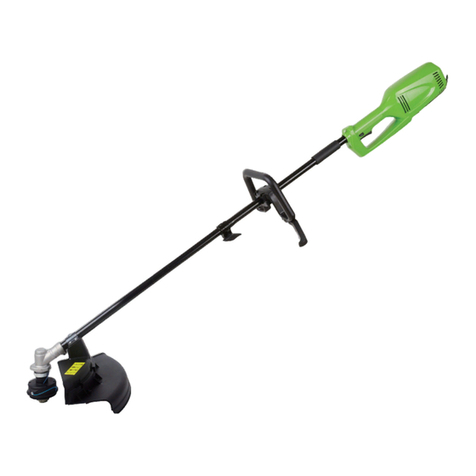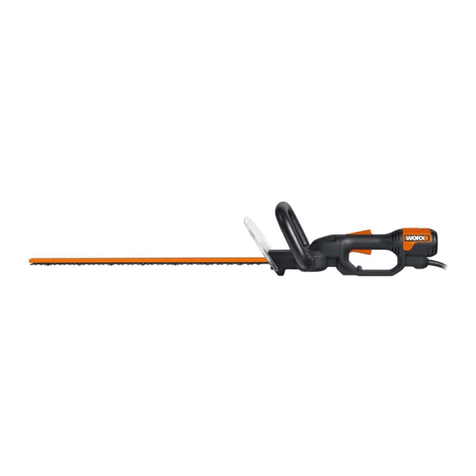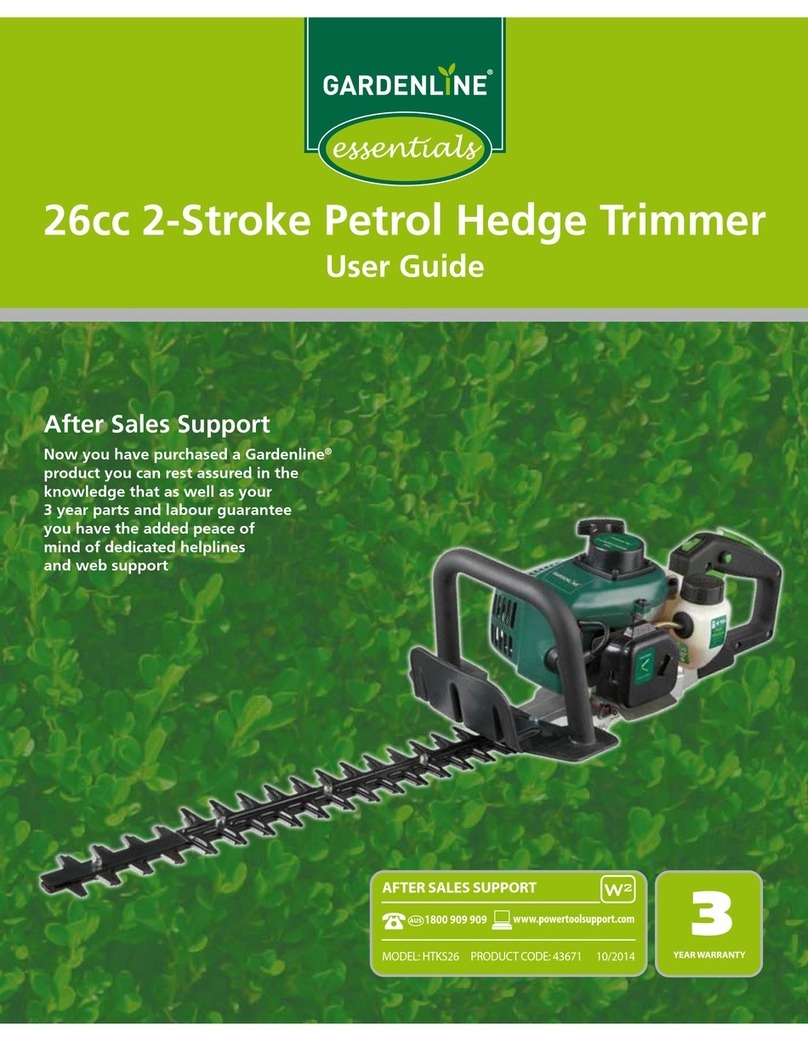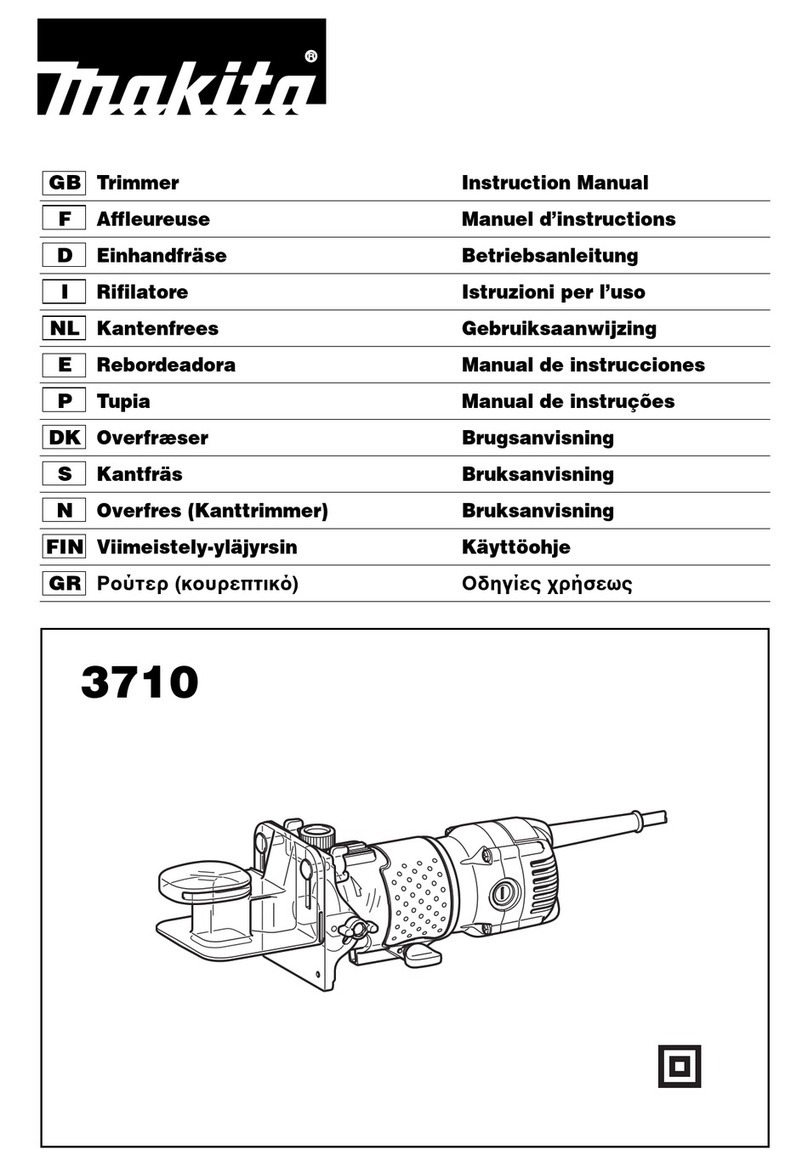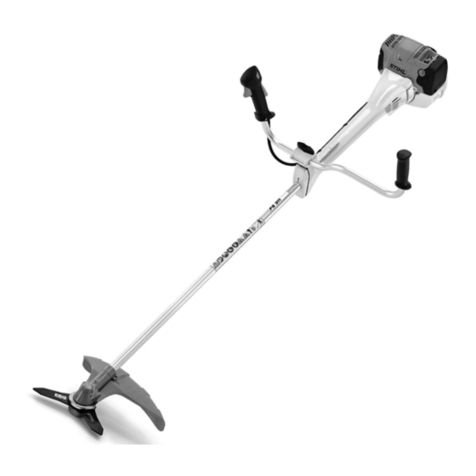SPECIFIC SAFETY RULES FOR TRIMMER USE
■Replace string head if cracked, chipped, or damaged
in any way. Be sure the string head or blade is
properly installed and securely fastened. Failure to do
so can cause serious injury.
■Make sure all guards, straps, deflectors and handles
are properly and securely attached.
■Use only the manufacturer's replacement line in the
cutting head. Do not use any other cutting attachment.
■Never operate unit without the grass deflector in
place and in good condition.
■Maintain a firm grip on both handles while trimming.
Keep string head below waist level. Never cut with
the string head located over 76 cm or more above the
ground.
SPECIFIC SAFETY RULES FOR
BRUSHCUTTER AND BLADE USE
■After engine stops, keep rotating blade in heavy grass
or pulpy weeks until it stops.
■Do not operate the brushcutter unless the blade
guard is firmly secured in place and in good condition.
■Use heavy gloves while installing or removing blades.
■Always stop the engine and remove the spark plug
wire before attempting to remove any obstruction
caught or jammed in the blade or before removing
and installing the blade.
■Do not attempt to touch or stop the blade when it is
rotating.
■Acoasting blade can cause injury while it continues to
spin after the engine is stopped or throttle trigger
released. Maintain proper control until the blade has
completely stopped rotating.
■Replace any blade that has been damaged. Always
make sure blade is installed correctly and securely
fastened before each use. Failure to do so can cause
serious injury.
■Use only the manufacturer's replacement TRI-ARC
blade intended for use on this brushcutter. Do not use
any other blade.
■The TRI-ARC blade is suited for cutting pulpy weeds
and vines only. Do not use for any other purpose.
Never use the TRI-ARC blade to cut woody brush.
■Exercise extreme caution when using the blade with
this unit. Blade thrust is the reaction that may occur
when the spinning blade contacts anything it cannot
cut. This contact may cause the blade to stop for an
instant, and suddenly “thrust” the unit away from the
object that was hit.
This reaction can be violent enough to cause the
operator to lose control of the unit. Blade thrust can
occur without warning if the blade snags, stalls,
or binds. This is more likely to occur in areas where it is
difficult to see the material being cut. For cutting ease
and safety, approach the weeds being cut from the
right to the left. In the event an unexpected object or
woody stock is encountered, this could minimize the
blade thrust reaction.
■Never cut any material over 13 mm (1/2 in.) diameter.
■Always wear the shoulder strap when using the
brushcutter and adjust to a comfortable operating
position. Maintain a firm grip on both handles while
cutting with a blade. Keep the blade away from body
and below waist. Never use the brushcutter with the
blade located 76 cm (30 in.) or more above the
ground level.
SPECIFICATIONS
Weight
- Without fuel, cutting attachment 5.58 kg
- With blade 5.90 kg
- With string head 5.77 kg
Fuel tank volume 425 cm3
Cutting swath 457 mm
Engine displacement 30 cc
Maximum engine performance
(in accordance with ISO 8893) 0.78 kW
Maximum rotational frequency
of the the spindle 10,000 min-1
Engine speed (rotational frequency)
at recommended max. spindle
rotational frequency 12,500 min-1
Engine speed (rotational frequency)
at idle 2,000-2,500 min-1
Fuel consumption (in accordance
with ISO 8893) at max.
engine performance 0.52 kg/h
Specific fuel consumption
(in accordance with ISO 8893)
at max. engine performance 0.47 kg/h
Vibration level idling
- Front handle 4.9 m/s2
- Rear handle 5.8 m/s2
Vibration level racing
- Front handle 5.1 m/s2
- Rear handle 6.2 m/s2
Sound pressure level
(in accordance with EN ISO 11806:1997,
ISO 7917:1987) 99 dB (A)
Sound power level (in accordance
with ISO 10884) 113 dB (A)
16
English
